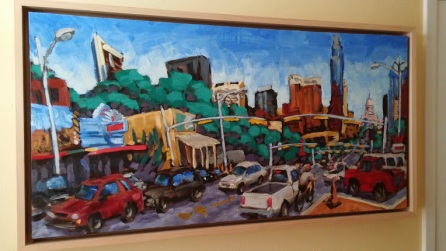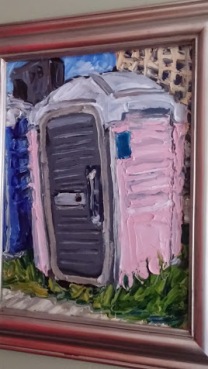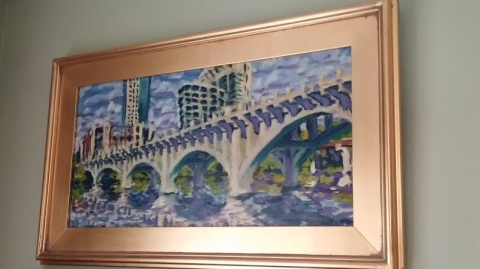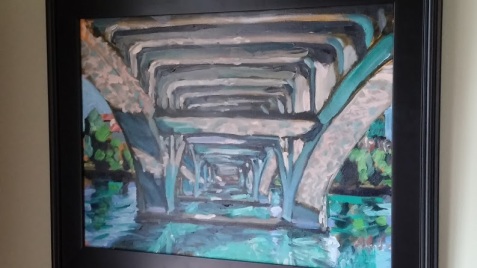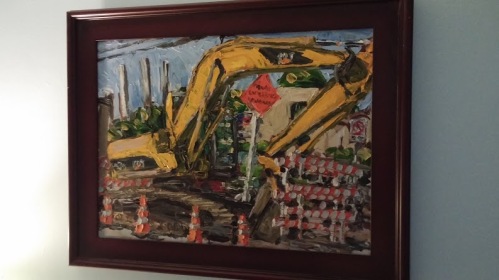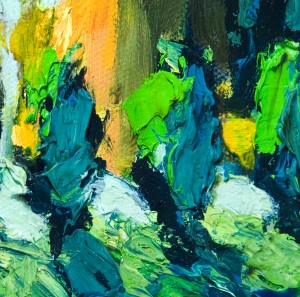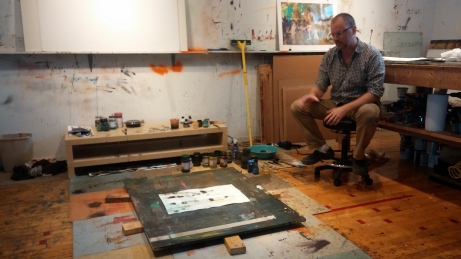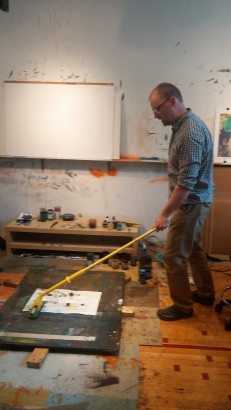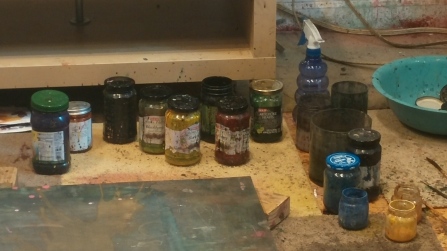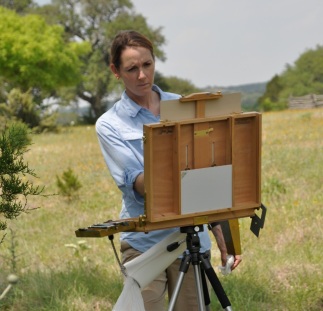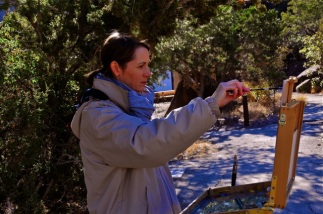Last week we visited Gladys Poorte at her studio in North Austin. Gladys will be having a show at Davis Gallery with Hollis Hammonds in October 2014. Works on paper and canvas will be shown alongside three dimensional assemblages. Gladys was kind enough to answer a few questions for us…

How did you get started?
Since I was a child, I always liked to draw, paint and build things. However, when I went to college in Argentina I majored in English as a Second Language and later got a Master’s in Adult Education at Penn State University. It was after that, when my first daughter was a baby, 26 years ago, that I started taking art classes in the evening. At first, it was mostly a fun break from taking care of a little baby all day. But I loved it, and a few years later when we moved to Austin I went back to school and studied Studio Art at the University of Texas.
Who or what has had a major impact on your career as an artist?
I‘m indebted to Dan Sutherland, a University of Texas professor, for most of what I’ve learned about painting. Among artwork that I consider influential, I’d mention ancient Chinese painting, Hieronymus Bosch, and contemporary artist Sara Sze.

Tell us a bit about your new work in the show
My work process typically involves building environments with all sorts of materials (fabric, paper, cardboard, plastic, metal, and found objects) and then making paintings of those environments. I usually dismantle the physical construct after the paintings are done. The paintings are the only remaining record of the process.
For the upcoming show, I created a large box which contains 6 environments lit by LED’s. The inside of the box can be seen through several openings on the different sides of the box. I made six paintings of the views inside the box. This time I will be showing both the box which was the source of the paintings together with the paintings.
This new show will also include other paintings of different environments that refer to landscapes, as well as a small 3D installation.
Describe a typical day in the studio.
My studio is at my home. I work in the studio every day, often listening to music or the radio. I usually have two or three different pieces going on at the same time, at different stages of completion. One day I may spend the time painting a piece already in progress. Another day I may be building “the stage” for a new painting or making a 3D object. And yet another day I may be building a panel for a future painting or working on digital images of finished work.
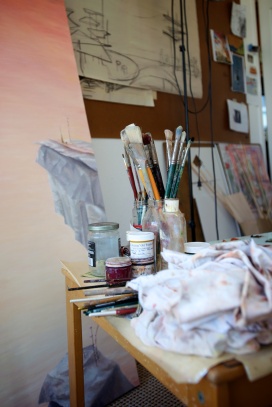
If you weren’t an artist, what would you be?
I would probably be involved in some sort of educational project or work in a nonprofit organization. Feeling that I’m making a difference in somebody’s life is very important to me.
When (if ever) do you feel that a piece is finished?
Some pieces reach the point at which I’m certain they’re finished in a pretty painless way. Other pieces linger at a point where they could be “considered finished” but there’s something about them that is not really clicking. I look at those pieces many times every day as I continue with other work until one day it suddenly dawns on me exactly what they need in order to be finished (and that is a very happy moment!) .
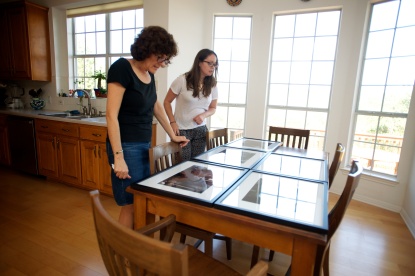
What was your first job?
Teaching English as a Second Language to 10 year olds in a bilingual elementary school in Buenos Aires, Argentina.
Single best invention in your opinion.
The printing press. I love books.
What item would you be lost without?
If we defined “item” in a very broad manner, I’d answer my husband.
And now for the most important question: Who would you say has the best margarita in town?
I actually don’t have margaritas, so I can’t make any recommendations. I’m originally from Argentina which produces some very good wines in the Andean province of Mendoza, our wine country. I actually was not familiar with margaritas until we came to live in Austin and I still prefer wine, especially Malbec, which has recently become quite popular in the US.
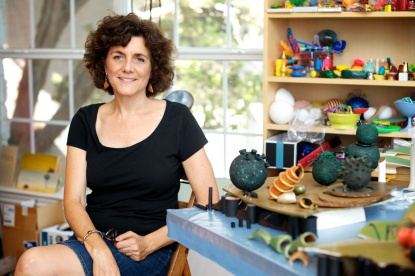
Thank you for a wonderful visit Gladys! We can’t wait for your show.
All photos courtesy of Jen Jenkins Photography
